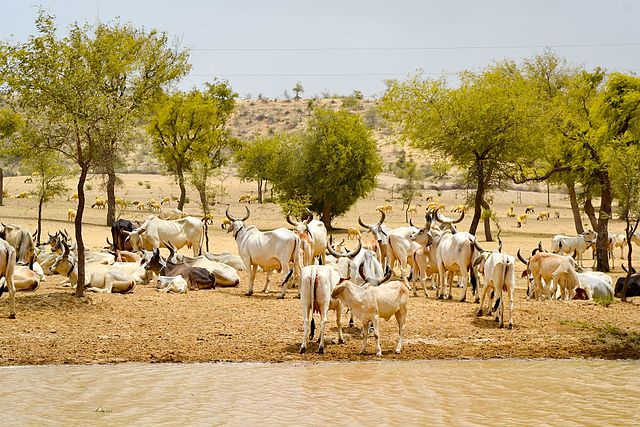The Saudi livestock and fisheries sectors will bring multi-billion dollar investment returns, according to a June 4, 2024 ministerial statement.
Projections peg returns from investments from the two sectors at 20 billion riyals ($5.343 billion) by 2030. This is according to the Undersecretary for Fisheries and Livestock Wealth in the Ministry of Environment, Water and Agriculture, Dr. Ali Al-Shaikhi.
Al-Shaikhi was speaking at an annual agricultural sustainability workshop in Riyadh that mobilizes investments especially in the Saudi livestock sector.
Through its mega projects in dairy farming, the Saudi livestock industry seeks to reduce dependence on volatile imports.
Thus in June 2023, the country had announced investment opportunities in dairy and other food sectors worth 75.01 billion Riyal ($20 billion).
A year later in June 2024, the investments look likely to pay off, hence the ministerial announcement of multi-billion dollar returns.
Besides, Saudi Arabia has also sought to improve its food, livestock and fisheries dependence by investing widely outside the country.
The foreign investment spree started in 2015 when a Saudi livestock company, SALIC, bought majority shares in ex-Canadian Wheat Board. That successful venture whetted SALIC to buy a $1.24 billion share in Singapore’s Olam Agri Holdings. The company then acquired lamb farmland in Australia in partnership with Brazil’s meat packing company, Minerva SA. Similarly, other Saudi firms also lease lush alfalfa plantations for cattle feed in far-flung nations such as the U.S.
Internal investments are not wanting either. For example, Almarai company expanded poultry production with $1.2 billion in 2023.
This way, the desert nation could realize its target of agricultural exports at $10.9 billion by 2035, above 2022’s $3.7 billion.
In a word, as a vital part of Saudi Arabia’s agriculture, livestock farming will benefit hugely from Saudi Vision 2030’s investments. As such, the following statistics focus further on the Saudi livestock sector and its key strengths.
Saudi Arabia Livestock Statistics
Saudi livestock production ranked 7th worldwide in 2021 with an index of 144.3 for meat, milk, eggs and honey production. Only Hong Kong, Laos, Qatar, Indonesia, Malawi and Bhutan in descending ranking had higher indexes. At the national level, the industry boasted $6.6 billion in dairy production value in 2023. This was 13.8% of the Middle East and North Africa region’s output.
Who dominates the Saudi dairy sector?
Local suppliers dominate 86.6% of the Saudi milk distribution sector, with imports at 24.4% in 2023. Household usage of dairy products led demand by 83.6% in market share worth $14 billion in 2023.
How big is meat production in Saudi Arabia?
Saudi Arabia has the most livestock in the Gulf Cooperation Council (GCC) and therefore produces the most red meat, regionally. In 2020, the country produced 165,000 tonnes of red meat, the highest in the GCC region. This meat comes from a substantial bovine and poultry population. In 2022, the cattle population numbered 655,600 heads, alongside a camel population of 2,000,242, 6,779,154 goats and a poultry count of 210,360.
